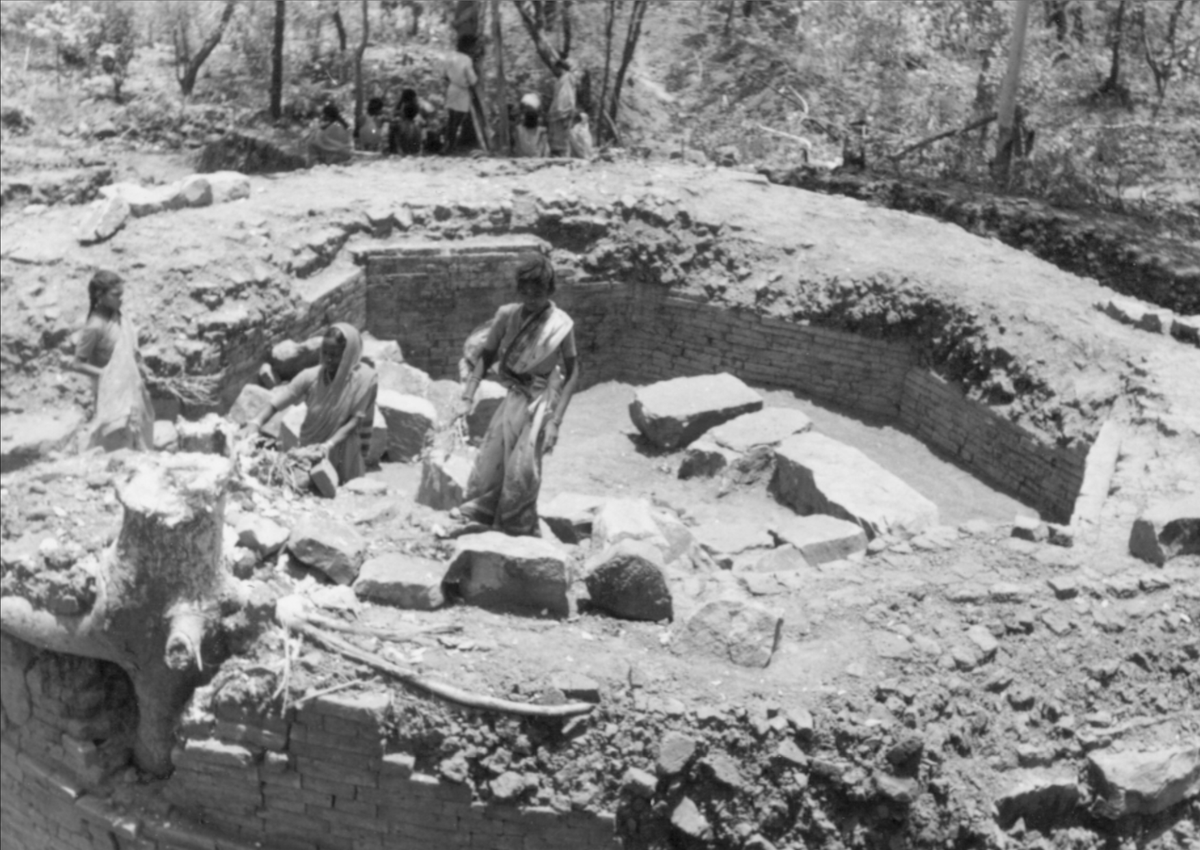1/ Maraguda, Orissa: A lost civilization, many of its glorious antiquities submerged in an early 90s Jonk irrigation project- the site of possibly the oldest Hindu temple monastery complex(Shiva & Shakti)
A detailed thread
@HINDprehistory @LostTemple7 @ReclaimTemples @TIinExile
A detailed thread
@HINDprehistory @LostTemple7 @ReclaimTemples @TIinExile
2/ Maraguda was the capital city of South Kosala, a metropolis and one of the biggest cities of ancient India amongst Hastinapur, Pataliputra, Vaisali, Taxila, and Kalinganagar.
3/ A great civilization grew up in ancient South Kosala with Maraguda valley as its epicenter, the territory being a glorious land of antiquities, and a cultural junction between North, South, and Central India through ancient history.
4/ Shaivism, Vaishnavism, Shakitsm, and Buddhism, were all known to have thrived and flourished at Maraguda at various stages of its history.
5/ The valley was the seat of political power of many ruling dynasties, important among them Nalas, Sarabhapuriyas, Panduvamsis, Somavamsis, and Kalachuris. With the illustrious Nalas, Maraguda emerged as the capital of Kosala and thrived for centuries with prosperity.
6/ The zenith of prosperity for Maraguda valley was under Sarabhapuriyas, who contributed greatly to social organization, developing localities and towns, and bequeathed a numismatic tradition by circulating coins.
7/ Kosali type of temple architecture is a novel contribution of Sarabhapuriyan rule. It was during Somavasi rule, however, when a glorious phase of temple building was witnessed at Maraguda valley exhibiting the zenith of this Kosali style.
8/ Excavation of a trishul mound at Maraguda brought to light a gigantic religious complex, consisting of temples, residential buildings, parks built in 5 tier projections- Shaivism & Shaktism had flourished in the region simultaneously!
9/ On the upper terrace of the mound, the remains of a Shakti temple were recovered, along with an image of goddess- four armed, standing over a lion, chiselled on red sand stone ("Mahishasuramardini"), bearing a 5th C. brahmi inscription.
10/ The garbha-griha, square in size, had eight small images of female deities. A number of Yogini images were discovered near this complex. This amalgamation of Shaivism and Shaktism at Maraguda had unique reflections in art and architecture of the region.
11/ This Shiva temple was very likely founded by the Nala king Varaharaja. The discovery of the Shiva temple monastery complex at Maraguda was unique, as most other monastic establishments from ancient India were either Jain or Buddhist.
12/ In the middle of the jungle at Maraguda valley, eight ancient Shiva temples were found (ashta sambhu), a gigantic Shiva linga collected from the valley was placed at Yogeswar temple, Maraguda.
13/ The Sarabhapuriya kings (5th-6th C.) were devout worshippers of Vishnu and declared themselves as "Param Bhagwat" in their charters. Krishna vasudeva was their supreme deity, remains of many Vishnu temples were found during excavations.
14/ The Gupta emblem of Garuda also finds place in the gold coins of Sarabhapuriya Kings along with representation of Shankhas and Chakras. A two armed image of & #39;Bhudevi& #39; was also found, an example of mother goddess& #39;s importance in Maraguda valley.
15/ Sun worship is also suggested at Maraguda, along with some Naga sculptures. Not only Hindu, but the find of an image of Buddha, in & #39;Bhumisparsha mudra& #39;, corroborates Hieun Tsang& #39;s accounts where he speaks of Buddhism in Maraguda.
16/ A number of Buddhist images were recovered from different mounds of Maraguda valley, it is said that Balarjuna, a Somavasi king was a patron of Buddhism.
17/ Apart from its religious syncretism, another unique feature of Maraguda was its urban planning, comparable to the saraswati valley culture. Remains of houses of burnt brick, buildings, parks, and drainage systems have been observed across an estimated area of 15 sq km.
18/ The citadel for rulers and outer towns of general public layout is replicated at Maraguda. Excavations of watch towers, gateways, a bridge, and a flower garden all point to economic prosperity, also noted by Hieun Tsang in his account.
19/ Ruins of massive structures from 11th/12th C. were found in the excavations done by the Orissa State archaeology department in the 70s and 80s, along with some Kalachuri coins; thus the importance of the region till the beginning of medieval times at least is established.
20/ Very little about Maraguda is available online- its Wikipedia page is an embarrassment. All the information in this thread is sourced from an excellent study by Shri. Shiba Prasad Behara: https://shodhganga.inflibnet.ac.in/handle/10603/187991">https://shodhganga.inflibnet.ac.in/handle/10...

 Read on Twitter
Read on Twitter


